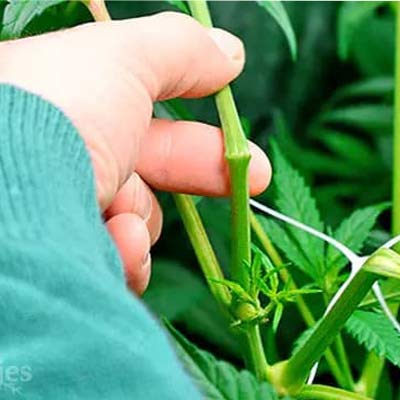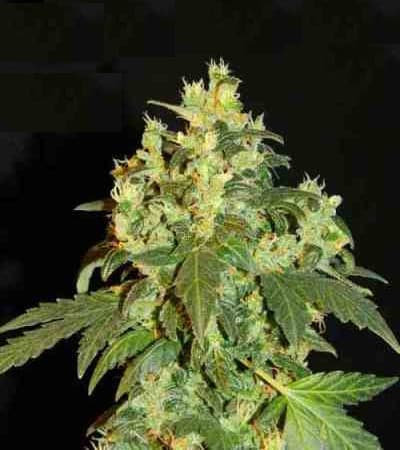BackBest Plant Training Techniques for High-Quality Cannabis Harvests
14.08.2025

Training your cannabis plants can dramatically improve the quality and quantity of your harvest. Through shaping and guiding plant growth, you increase light penetration, control height, and stimulate flower production. Whether you're new to growing or a seasoned cultivator, understanding cannabis plant training is key to unlocking your garden's full potential.
Why Plant Training is Essential for Cannabis Growth
Plant training helps manage the structure of your cannabis plants, ensuring all bud sites get sufficient light and airflow. Proper training reduces the risk of mold, improves overall plant health, and boosts yields significantly. With the right techniques, you can train your plants to grow more efficiently and produce higher-quality flowers.
How Training Improves Yield and Plant Health
Training allows you to open up the canopy, reduce shaded areas, and create more even bud development. A flatter canopy means more efficient light use, which directly increases flower size and potency. Additionally, trained plants are generally sturdier, with stronger branches that can support heavier buds.
When to Start Training Cannabis Plants
The best time to begin training is during the vegetative stage, when stems are still flexible. Starting too early can stress seedlings, while starting too late may cause unnecessary damage. Most cannabis training techniques work best once plants have developed 3–5 nodes.
Effective Plant Training Techniques
There are several cannabis training techniques used to optimize plant structure. The method you choose depends on your experience, goals, and the specific strain you’re growing.
Low-Stress Training (LST) for Better Canopy Control
LST involves gently bending and tying down branches to spread growth evenly. This technique doesn’t damage the plant and helps maintain a flat canopy. It's ideal for growers looking to increase yields without shocking the plant.
High-Stress Training (HST) for Maximum Yield
HST includes more aggressive methods like topping, fimming, and super cropping. These techniques involve cutting or pinching stems to trigger bushier growth. While more invasive, they often lead to higher yields and better bud distribution.
Topping and Fimming – Encouraging Bushier Growth
Topping cuts off the plant’s main stem above a node to create two new growth tips. Fimming is a partial cut that results in multiple tops. Both methods are effective for promoting fuller plants and enhancing overall structure.
Super Cropping – Strengthening Plant Structure
Super cropping is a form of controlled stress where branches are gently crushed and bent to redirect growth. This increases nutrient flow and encourages the plant to reinforce its structure. It’s useful for managing taller strains or increasing strength before flowering.
Supporting Cannabis Plants for Stronger Growth
Training isn't just about bending stems—supporting them is just as important. Without proper support, heavy buds can snap branches or reduce airflow, leading to lower-quality harvests.
Using Trellis and Stakes for Stability
Horizontal trellises and vertical stakes help hold branches in place as they grow heavier. They keep the plant upright, maintain shape, and make it easier to space out buds for maximum light exposure.
Managing Height and Light Exposure
Controlling vertical growth ensures that all parts of the plant receive adequate light. This is especially important for indoor growers working with limited height. Use training to prevent uneven development and burnt tops near grow lights.
Common Mistakes to Avoid in Cannabis Plant Training
While cannabis growing techniques like pruning and LST offer great benefits, poor timing or overtraining can have the opposite effect. Avoid these mistakes to protect your plants.
Overtraining and Plant Stress
Excessive bending or cutting can stress your plant and stunt growth. Always allow recovery time between training sessions, and monitor the plant for signs of wilting or slowed development.
Timing Mistakes That Reduce Yields
Training too early can damage young seedlings, while training during flowering can interrupt bud development. Stick to the vegetative phase for aggressive techniques and plan accordingly to avoid setbacks.
Conclusion: Optimizing Cannabis Harvests with Training
With the right cannabis training techniques, you can guide your plants to grow stronger, yield more, and produce higher-quality buds. From low-stress bending to advanced pruning strategies, each method offers unique advantages when timed correctly and applied consistently.
Best Practices for Healthier, High-Yielding Cannabis Plants
- Start training during the vegetative stage when stems are flexible.
- Choose techniques that match your skill level and plant type.
- Support heavy branches with stakes or trellis netting.
- Avoid overtraining and give plants time to recover.
- Use clean, sharp tools to prevent infections when pruning.
FAQ – Cannabis Plant Training
What is cannabis plant training?
It’s a group of techniques used to shape cannabis plants for better light use, stronger structure, and higher yields.
How to train cannabis plants effectively?
Start early in veg phase, use LST or HST, and adjust based on strain behavior and growth pattern.
What are the most common cannabis training techniques?
LST, topping, fimming, super cropping, and SCROG are popular methods used by growers for canopy control and yield improvement.
When should I stop training cannabis plants?
Training should stop by early flowering. Continuing after week 2–3 of bloom can harm bud development.
Can cannabis training techniques stress the plant?
Yes, especially HST methods like topping or super cropping. Always allow recovery time to avoid stunting growth.


